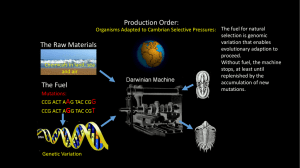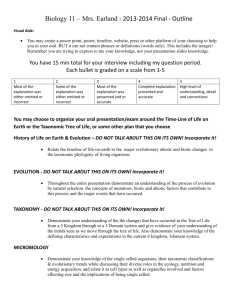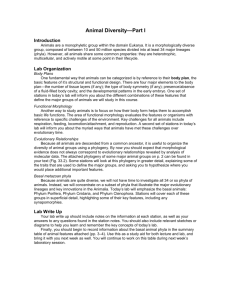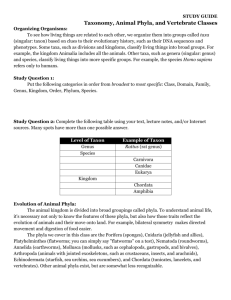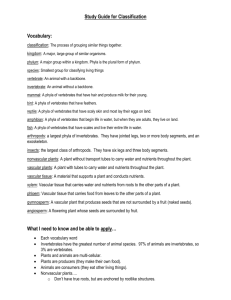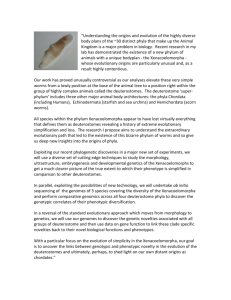Outline 14
advertisement
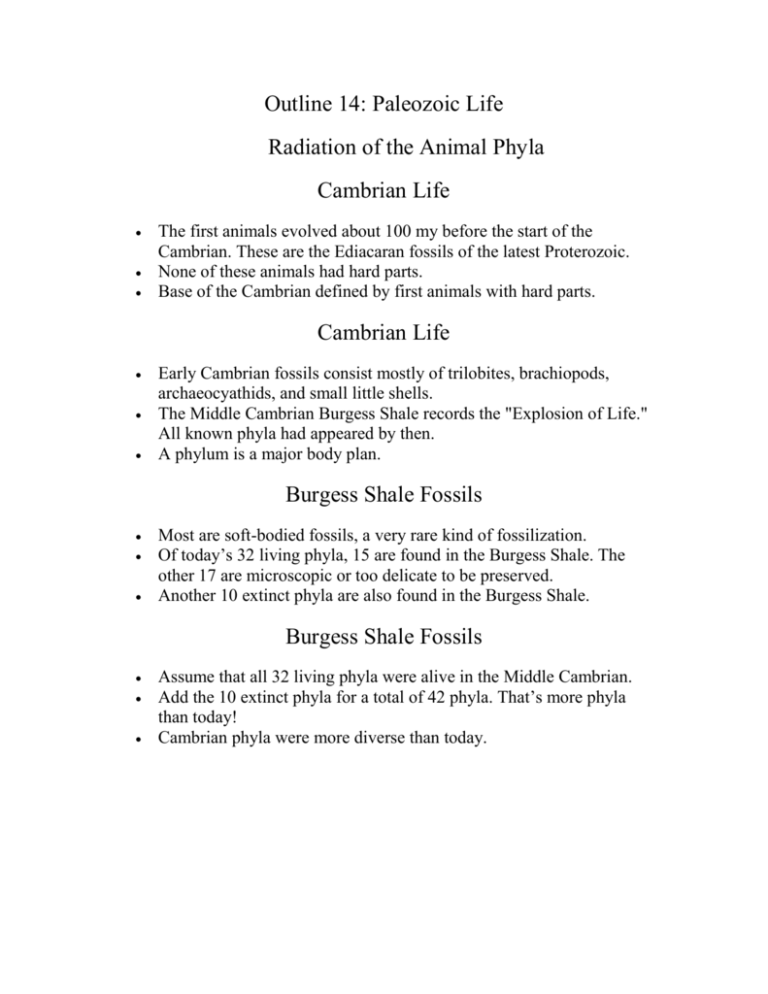
Outline 14: Paleozoic Life Radiation of the Animal Phyla Cambrian Life The first animals evolved about 100 my before the start of the Cambrian. These are the Ediacaran fossils of the latest Proterozoic. None of these animals had hard parts. Base of the Cambrian defined by first animals with hard parts. Cambrian Life Early Cambrian fossils consist mostly of trilobites, brachiopods, archaeocyathids, and small little shells. The Middle Cambrian Burgess Shale records the "Explosion of Life." All known phyla had appeared by then. A phylum is a major body plan. Burgess Shale Fossils Most are soft-bodied fossils, a very rare kind of fossilization. Of today’s 32 living phyla, 15 are found in the Burgess Shale. The other 17 are microscopic or too delicate to be preserved. Another 10 extinct phyla are also found in the Burgess Shale. Burgess Shale Fossils Assume that all 32 living phyla were alive in the Middle Cambrian. Add the 10 extinct phyla for a total of 42 phyla. That’s more phyla than today! Cambrian phyla were more diverse than today. A Paradox There were more body plans (phyla) near the start of animal life than today. However, there were many fewer species. This doesn’t match the expectation of slow evolutionary diversification of life. The Pattern of Animal Evolution Initial radiation of phyla. Reduction by natural selection. No new phyla since the Cambrian. Diversification within remaining phyla. A Hypothesis The genome of early animals was less rigid, not as "hardwired" as later animals. Adaptive mutations were more possible. A wide variety of body plans were produced by mutations. Natural selection eliminated some of these body plans. A Hypothesis Body plans that survived became the modern phyla. 500 my of evolution has made genomes more rigid and more species rich. Mutations required to make a new body plan would be lethal. Phyla were locked in.
